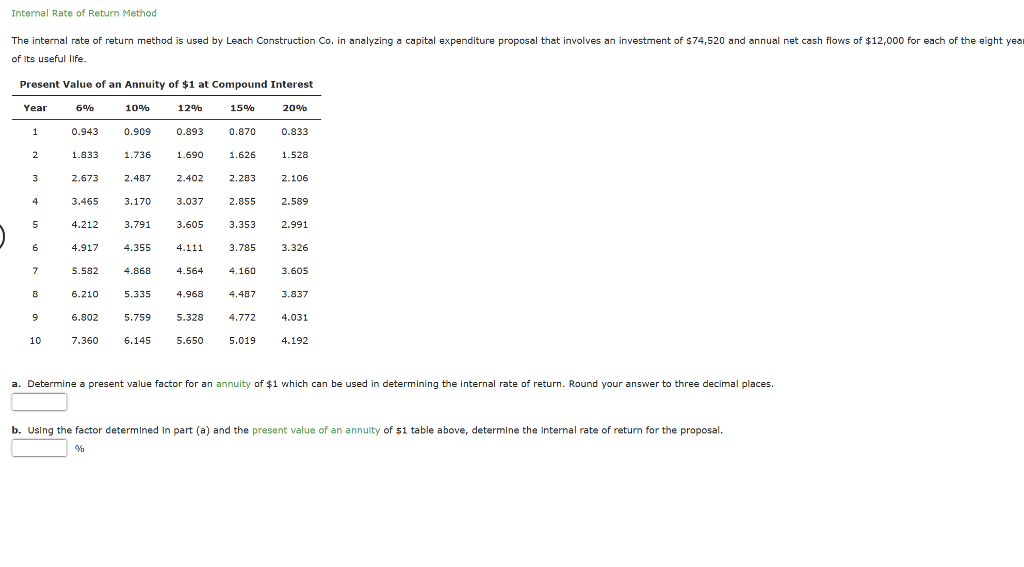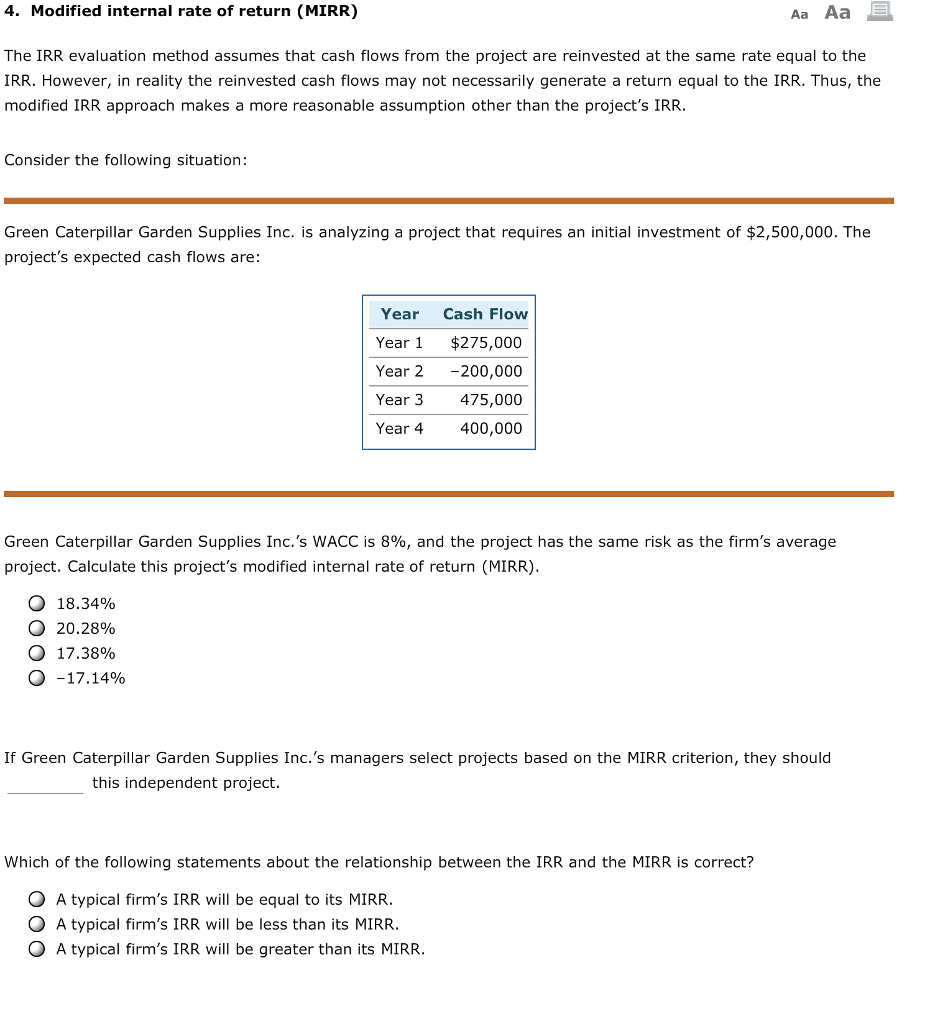
At Finance Strategists, we partner with financial experts to ensure the accuracy of our financial content. For information pertaining to the registration status of 11 Financial, please contact the state securities regulators for those states in which 11 Financial maintains a registration filing. 11 Financial is a registered investment adviser located in Lufkin, Texas. 11 Financial may only transact business in tax deadline is april 15, 2021 for 2020 taxes tax day 2021 those states in which it is registered, or qualifies for an exemption or exclusion from registration requirements. 11 Financial’s website is limited to the dissemination of general information pertaining to its advisory services, together with access to additional investment-related information, publications, and links. It’s important to note that certain assumptions can cause the IRR to become overstated.
Cash Flow Analysis Example
The IRR can be defined as the discount rate which, when applied to the cash flows of a project, produces a net present value (NPV) of nil. This discount rate can then be thought of as the forecast return for the project. If the IRR is greater than a pre-set percentage target, the project is accepted. The internal rate of return is relatively easy to understand and to calculate using a spreadsheet.
IRR Calculator — Excel Template
A common misconception people have is that it is impossible to calculate IRR for multiple cash flows manually. To calculate IRR for multiple cash flows, you’d need to use interpolation. Often misconstrued as a very “complicated” investment appraisal technique, the Internal Rate of Return (IRR) is actually one of the easiest and most intuitive capital budgeting tools to evaluate an investment opportunity. This post will take you from zero to pro, showing you how to calculate IRR step by step manually and on Excel® after giving you a simple explanation of what it is. The internal rate of return is a financial metric that shows how profitable a project can be by determining the rate of return at which point the project would break even. The above example clearly explains the process of determine internal rate of return in is a systematic manner using a suitable example which is very commonly faced by any company while making investment decisions.
Internal rate of profitability (IRR): Definition and example
In other words, the initial capital outlay (how much is invested at the beginning) is equal to the present value of the future cash flows (money brought in) as a result of the amount invested. Net present value is calculated by discounting future cash flows by a discount rate, which is the rate a company expects to earn on investments. Finally, IRR is a calculation used for an investment’s money-weighted rate of return (MWRR). The MWRR helps determine the rate of return needed to start with the initial investment amount factoring in all of the changes to cash flows during the investment period, including sales proceeds. The ultimate goal of IRR is to identify the rate of discount, which makes the present value of the sum of annual nominal cash inflows equal to the initial net cash outlay for the investment. Several methods can be used when seeking to identify an expected return, but IRR is often ideal for analyzing the potential return of a new project that a company is considering undertaking.
Determining the number of IRRs

IRR is a discount rate that makes the net present value (NPV) of all cash flows equal to zero in a discounted cash flow analysis. We’ll use the same cash flows from the two scenarios above, and we will have different finance and reinvestment rates given the distinct characteristics of these investments. We’re calculating the IRR of the investment as in the previous example.
- Since the investment represents an outflow of cash, we’ll place a negative sign in front of the figure in Excel.
- Without a computer or financial calculator, IRR can only be computed by trial and error.
- The ROI might tell an investor the actual growth rate from start to finish, but it takes the IRR to show the return necessary to take out all cash flows and receive all of the value back from the investment.
- If you are evaluating multiple potential ventures, you can use IRR to rank and prioritize them using IRR to predict the returns they might generate.
- IRR is uniform for investments of varying types and, as such, can be used to rank multiple prospective investments or projects on a relatively even basis.
Defining IRR
Both IRR and NPV can be used to determine how desirable a project will be and whether it will add value to the company. While one uses a percentage, the other is expressed as a dollar figure. While some prefer using IRR as a measure of capital budgeting, it does come with problems because it doesn’t take into account changing factors such as different discount rates. The IRR results in Excel or Google Sheets represent the annual rate of return for a project or investment.
Whether you’re an individual investor or run a company, it’s important to deploy your investment capital in a way that makes sense. The internal rate of return rule can be a useful tool for comparing your different options. However, the rule has some downsides that can lead to flawed results, and you don’t want to follow it blindly because there may be other issues to consider that it doesn’t account for. The initial investment is listed as a negative in order for Excel to know to calculate it against the expected annual return.
As such, the future cash flow that results from an investment is discounted to its present value under the IRR rule. The same concept applies to yield to maturity (YMT), where the discount rate forces the present value of the cash inflow to equal the price of the bond if you hold the bond to maturity. In both cases, the analysis of what is the time value of money constitutes the bottom line for the calculation. The internal Rate of Return is much more helpful when it is used to carry out a comparative analysis. When IRR is used in isolation as one single value, it is less effective. It is often used to rank multiple prospective investment options that a firm is planning to undertake.
The default number of years in our IRR calculator is three, but if you want to analyze a more extended period, the additional lines will pop up automatically. Also, you will simultaneously see the estimated internal rate of return (IRR) as you input each year. Thus, both are equally valuable and useful metric for investment comparison and valuation. In reality, both are widely used in the financial markets to make informed business decisions. However, both are extremely valuable and useful in the financial market.


Commenti recenti